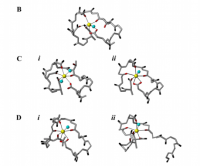Dan W
Member
- Joined
- Jan 22, 2013
- Messages
- 1,528
I came across one located in Germany:So, the bigger question is - what labs would accept nails for analysis?
111€ for aluminum, antimony, arsenic-total, barium, beryllium, bismuth, boron, cadmium, calcium, chromium, cobalt, copper, germanium, iodine, iron, lead, lithium, magnesium, manganese, mercury, molybdenum, nickel, palladium, platinum, selenium, silver, strontium, thallium, tin, titanium, tungsten, uranium, vanadium, zinc, zirconium.
144€ for the above plus cerium, cesium, dysprosium, erbium, europium, gadolinium, gallium, iridium, lanthanum, lutetium, praseodymium, rhenium, rhodium, ruthenium, samarium, tantalum, tellurium, thorium, thulium, ytterbium.


